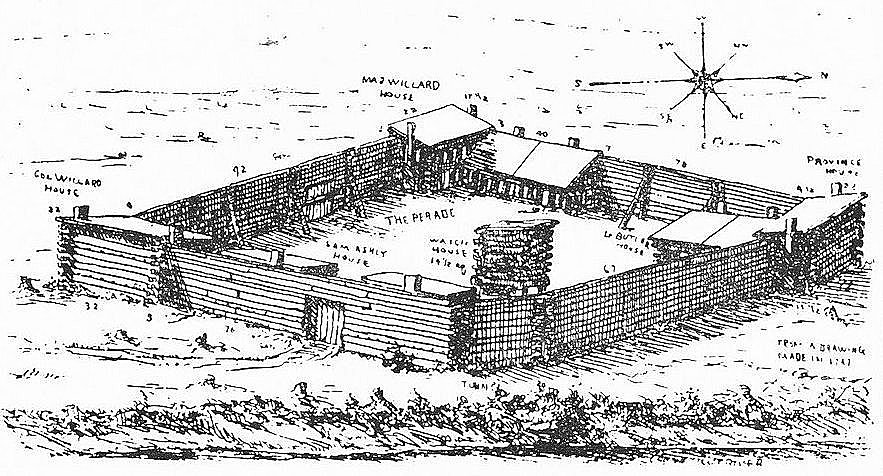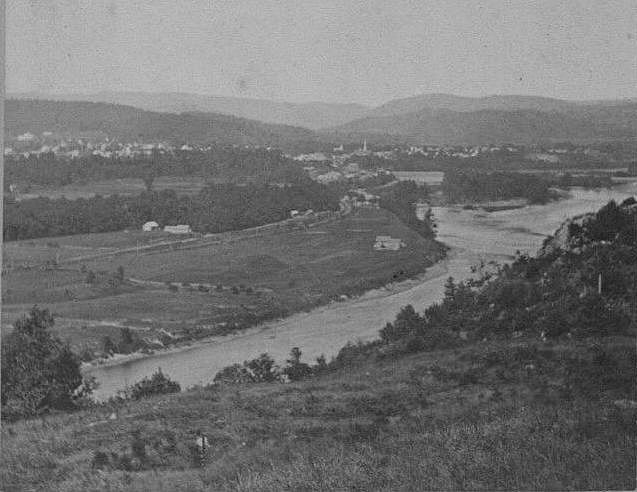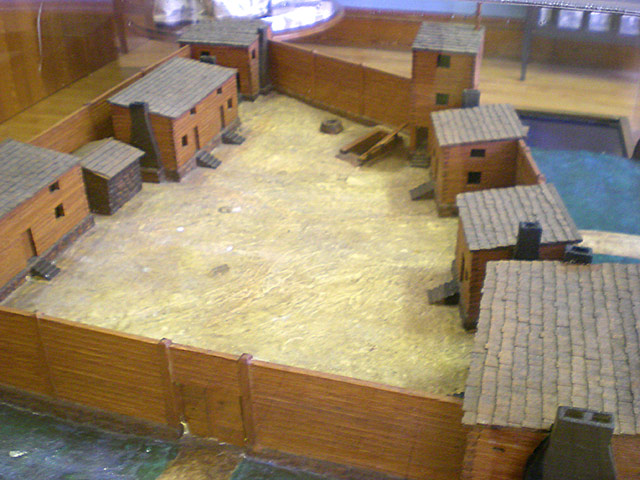FORT DUMMER
A Land Acknowledgement
Like every place in the United States, Brattleboro was built on stolen land, and the European settlers who came here during the colonial period did everything they could to drive out the Indigenous people who lived here. Those people are the Sokoki Abenaki (or, translated into English from the original Sokwakiak, the People Who Separated), and despite centuries of persecution they survive today. Their native tongue, Aln8ba8dwaw8gan—the Western Abenaki language—survives as well, but is greatly endangered. To the Sokoki Abenaki, this place is known as Wantastegok, the Place of the River Where Things Are Lost, referring to the confluence of Kwenitekw with Wantastekw, what we now call the Connecticut River and the West River. Every corner of this land holds their stories. This research site on the Brattleboro Words Trail documents the history and enduring presence of the Sokoki Abenaki and their homeland, Wantastegok.
A key site for local Indigenous history, and for the history of competition between England and France to settle North America, is Fort Dummer. The history of Fort Dummer takes us into the beginning of the 18th Century, at a time when Sokokis, other Abenakis, and their Northern Seven Nations allies were trying to contain the English within the bounds of their existing colonies of Massachusetts, Connecticut, Rhode Island and New Hampshire, and prevent them from settling more Indigenous land to the North and West. Fort Dummer was the first European settlement in what later became Vermont; it was considered by the English to be a northern and western “frontier” of wilderness and Wabanaki territory. And yet, there is not much information about the fort, its land, and its site offered to residents or visitors of Brattleboro.
During the time that it was built and occupied, Fort Dummer was the “Frontier” between English settlements, and Wabanaki territory, to the North. If you can imagine, what later became Vermont was regarded by settlers at that time as a vast wilderness that stretched between where the English settled in what they called the colonies of Massachusetts, New Hampshire, and Connecticut, to the south, and where the French settled in the North, on the North and South banks of the Saint Lawrence river, that included the strongholds of Montreal and Quebec. There were Native and settler villages along the Hudson River to the West, and in what later became New Hampshire, to the east; but the rocky, mountainous, riverine lands of Vermont were squarely Indigenous country, and thus, imagined to be “wild” by the British settlers.

A sketch of Fort Dummer by Charles J. Brasor.

David A. Henry’s stereoview of the site of Fort Dummer from Hinsdale, NH.
At this time, rivers such as the great Connecticut River, the West River, the Winooski, Otter Creek, and the Hudson, were the highways of travel, as Indigenous people traveled them by canoe, and portaged over land.
Native people of the Northeast frequently traveled between Eastern Wabanaki country, in what later became Maine, New Hampshire, and New Brunswick) and Western Wabanaki country (which later became New Hampshire, Vermont, and Western Massachusetts), as well as west to Mohican and Mohawk territory (in what later became known as the Mohawk Valley, Albany, Schnectady, along the Hudson, Lake George, and the Hoosatonic), east to Nipmuc and Wampanoag territory, south to Mohegan and Narragansett territory, and north to the territory of the Seven Nations: Mohawk, Abenaki, Algonquin, Nippising, and Oswegatchie territory, along the Saint Lawrence and in the greater Montreal area.
Thus, the site of Fort Dummer was located at a strategic confluence of travel routes: it was on the point just north of British settlement after which a number of rivers joined the Connecticut to flow south to the sea.

Letter from Massachusetts Governor Belcher to local appointed colonial officials instructing them to meet with Indigenous representatives at Fort Dummer, to renew the peace they had all agreed upon two year’s prior, at a conference in Deerfield Massachusetts, through political agreement and symbolic exchange of wampum and goods, 1737. Framed letter kept at Brooks Memorial Library. Photo credit: Jessica Dolan 2017.

